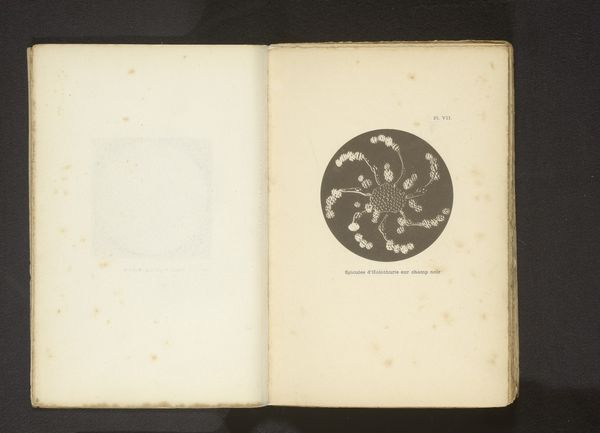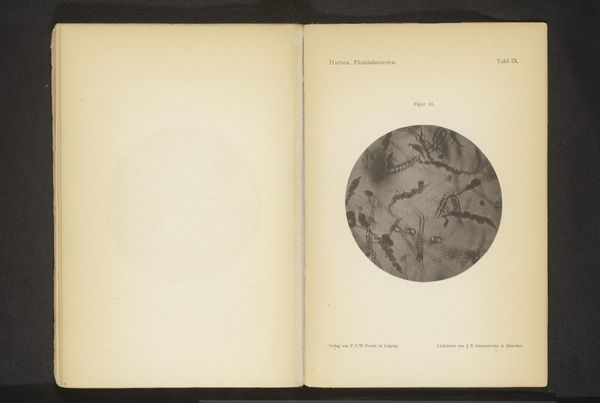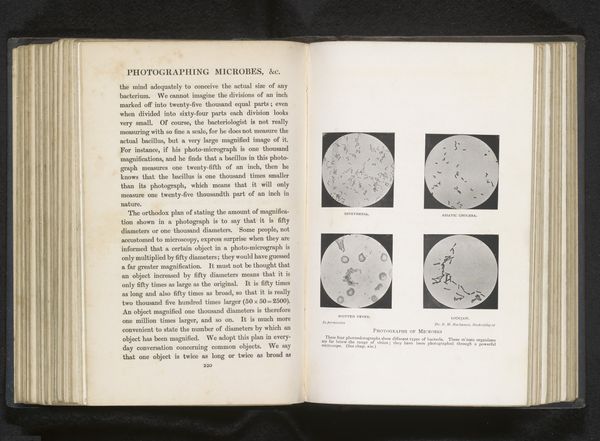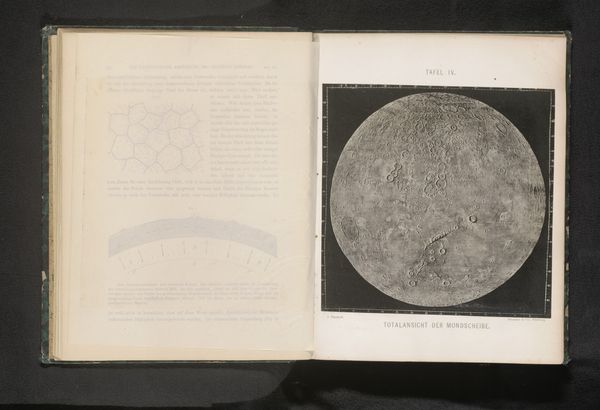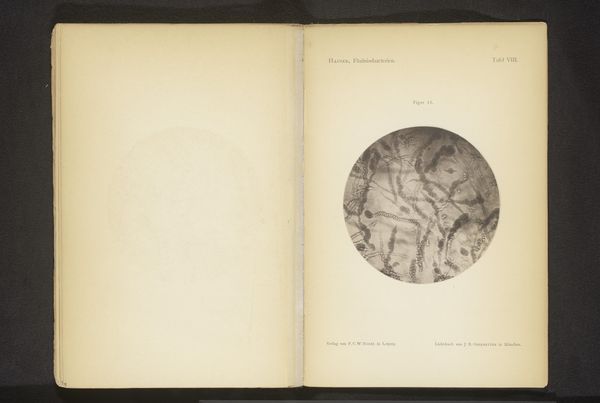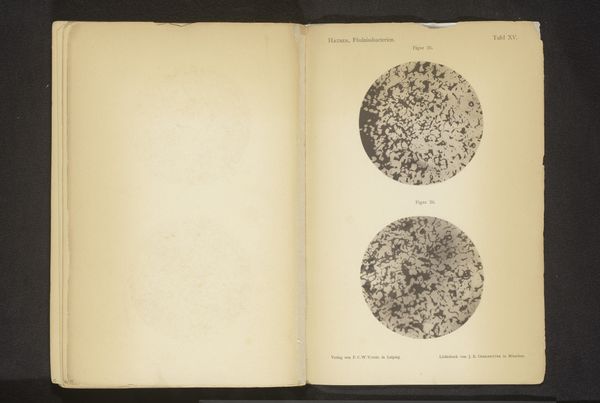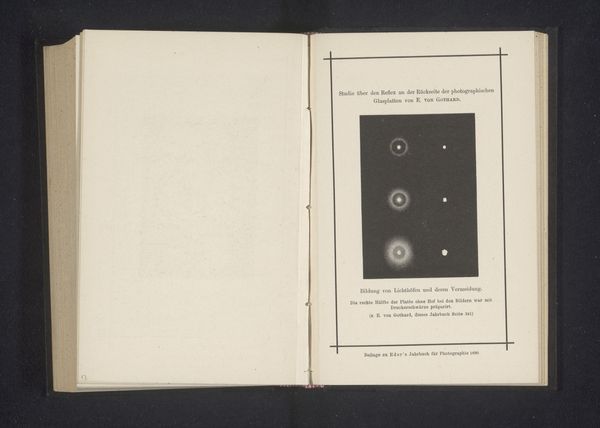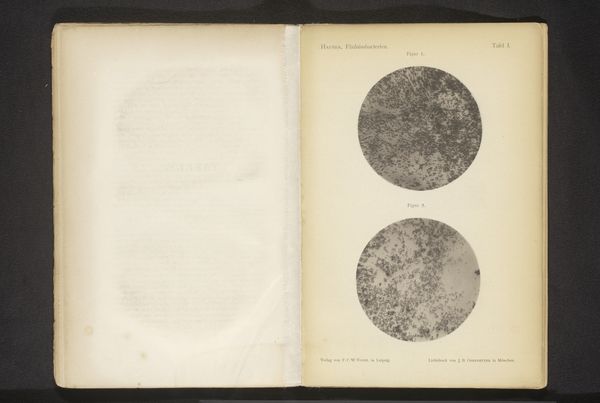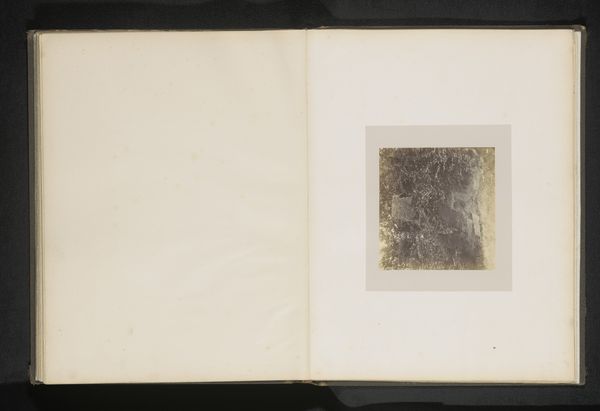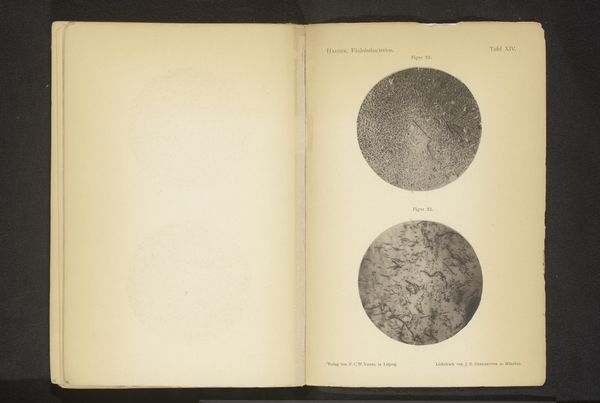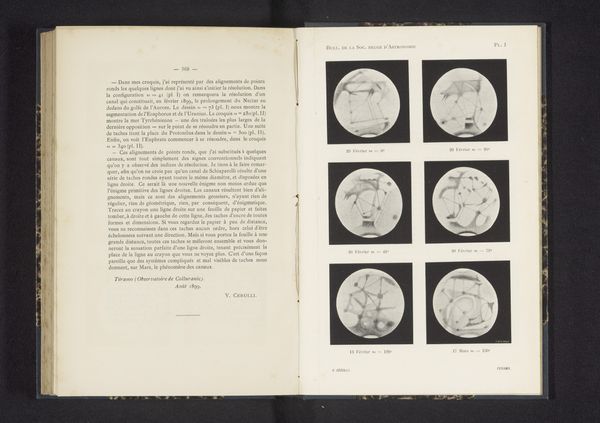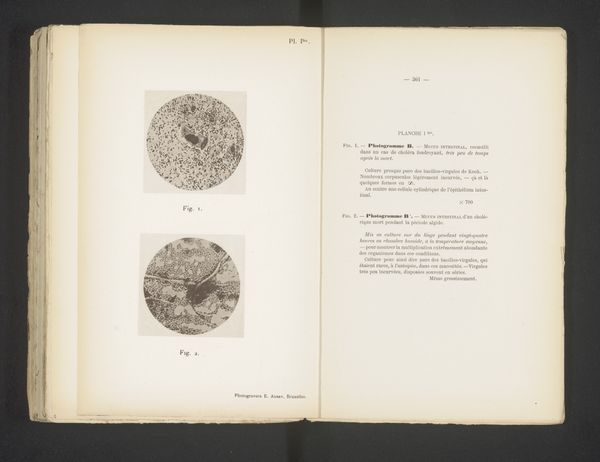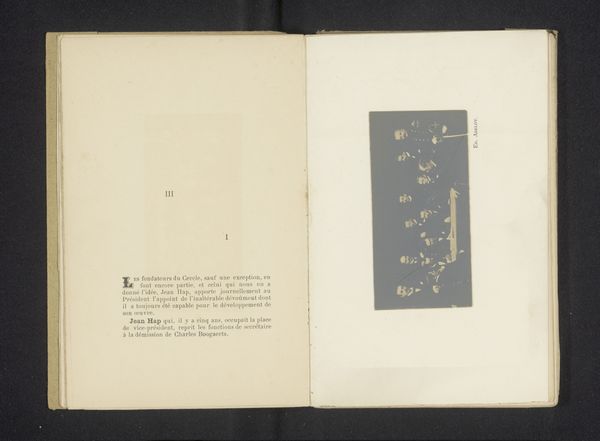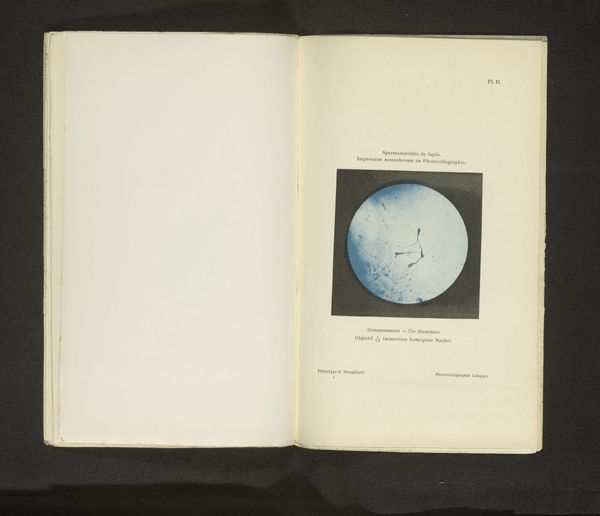
print, paper, photography
#
aged paper
#
still-life-photography
#
homemade paper
#
paperlike
# print
#
sketch book
#
hand drawn type
#
personal journal design
#
paper
#
photography
#
personal sketchbook
#
ancient-mediterranean
#
folded paper
#
thick font
#
academic-art
#
design on paper
Dimensions: height 66 mm, width 67 mm
Copyright: Rijks Museum: Open Domain
Curator: Here we see “Microscoopopname van tetanus bacteriën,” a photographic print made before 1899 by an anonymous photographer. It’s a very early image capturing tetanus bacteria. What strikes you about it initially? Editor: There’s a starkness, almost a clinical feel, in the presentation of this disease. I can’t help but think about the material cost of life during that era, made visible. The print itself seems fragile, much like health at the time, a delicate record of invisible killers. Curator: Absolutely. Consider the societal context. This image emerged during a period of intense scientific and medical advancement, amidst widespread disease. This work speaks volumes about the human drive to understand and control our environment through science. We can ask, too, about who was exposed, who had access to the new, emerging "cure." Editor: Indeed, looking closer, you start to notice the hand-drawn quality of the text around the bacteria photograph. The labor involved in producing such a document before the advent of widespread photographic reproduction—it’s a tangible connection to a time when scientific progress was slow and hard-won. I wonder who handled the making. Curator: And it underscores the inherent power dynamics in that pursuit. The ability to visualize something like tetanus, even through a lens of scientific inquiry, reflects societal structures determining who has access to knowledge, power, and healthcare, all too often linked to gender, race, and class. The labor is evident in every carefully rendered line, hinting at the intellectual and manual work upholding such power. Editor: It’s like a physical manifestation of scientific development – labor literally printed onto the page, shaping knowledge through production. It really gets me thinking about materiality as intrinsic to the understanding itself. We often see photographs but we have to recognize their production contexts and that process changes everything about its supposed message. Curator: I see this piece also as an important meditation on mortality. A reminder of the social and economic forces that determined who lived and who died, the image quietly screams questions of inequality, and still does today. Editor: Agreed. By examining the work through its material processes, and situating it within the context of disease, labor, and inequality, it transcends its initial clinical presentation to tell a more nuanced, ultimately humane story. It's hard not to think about what kind of impact these photos must have made.
Comments
No comments
Be the first to comment and join the conversation on the ultimate creative platform.
